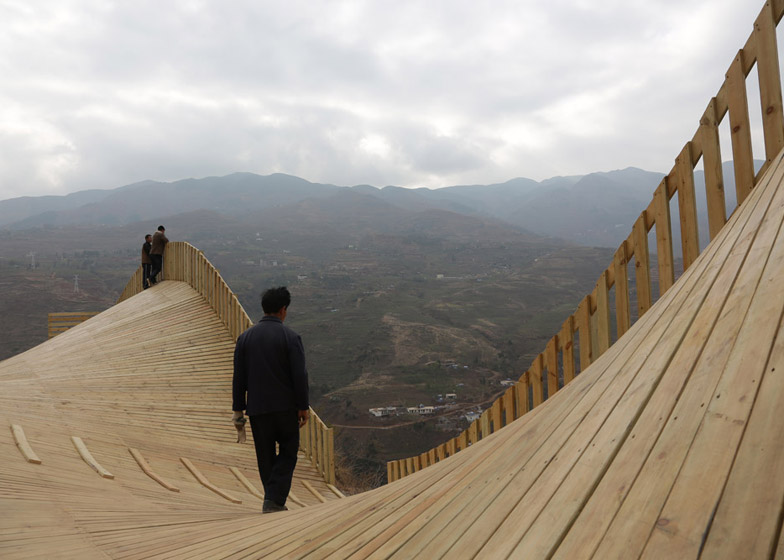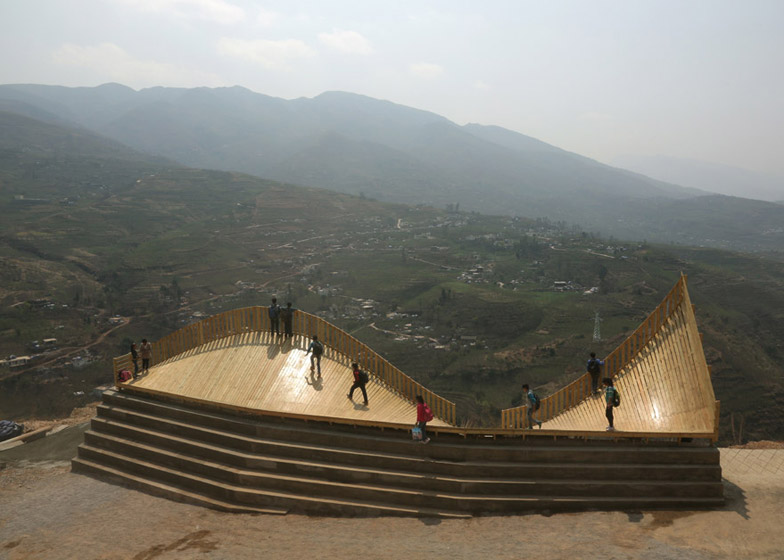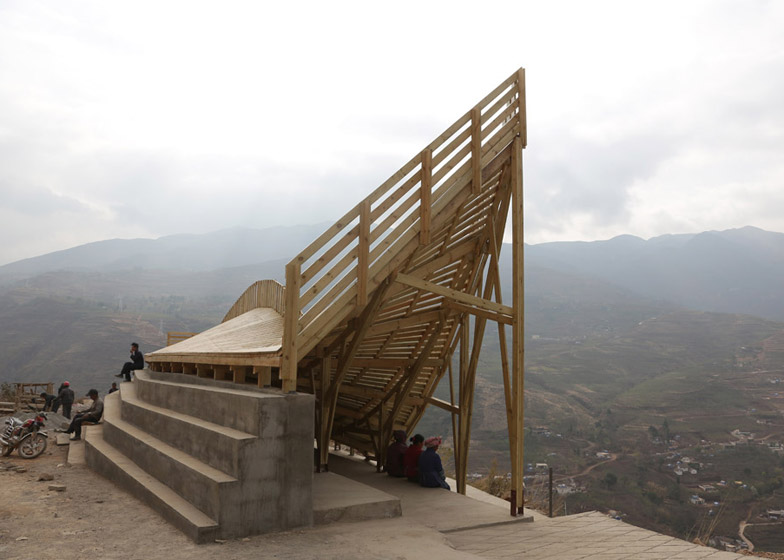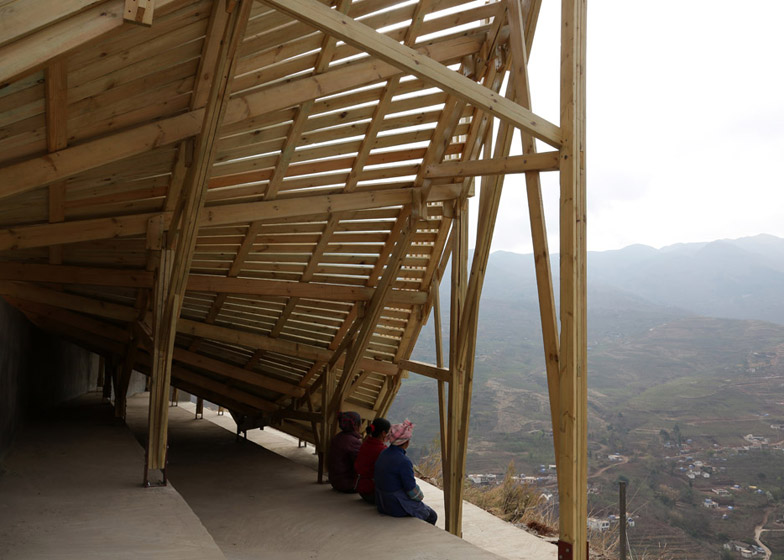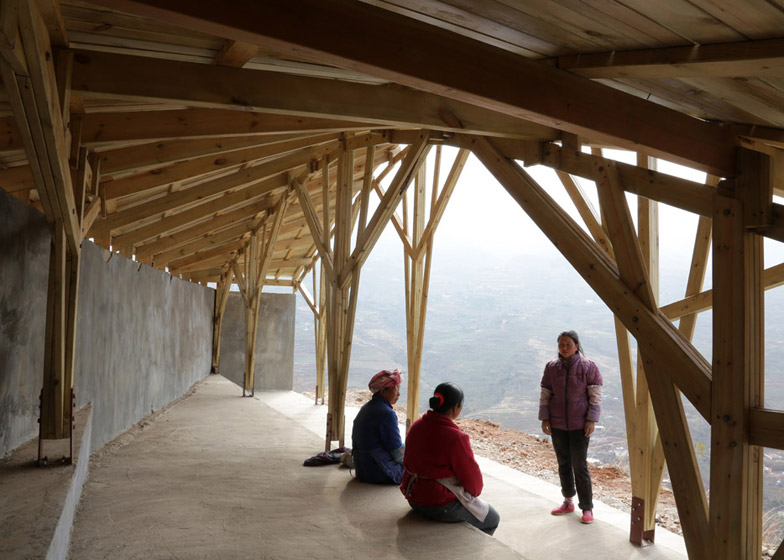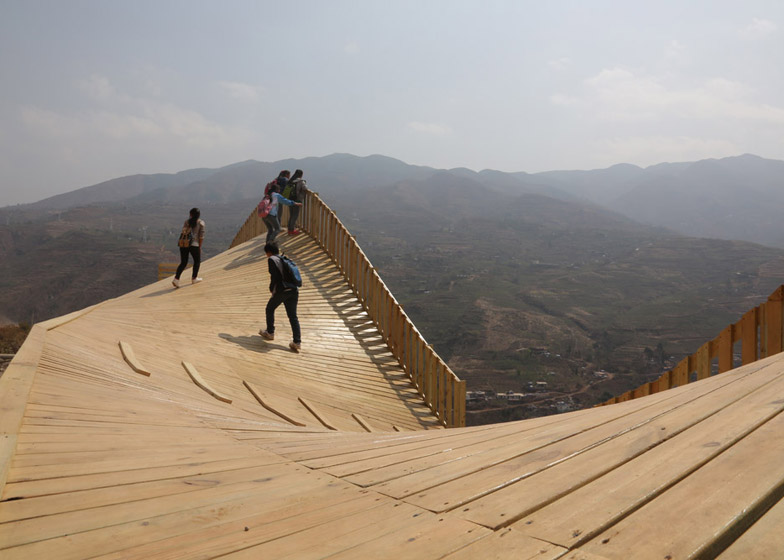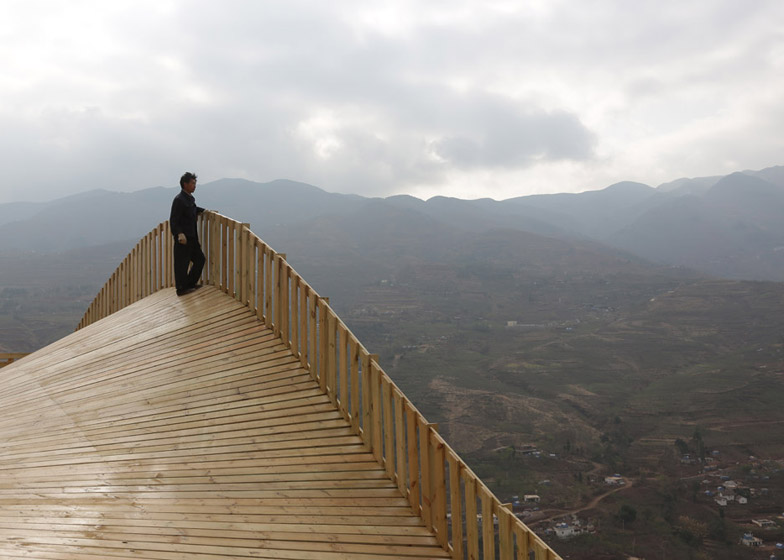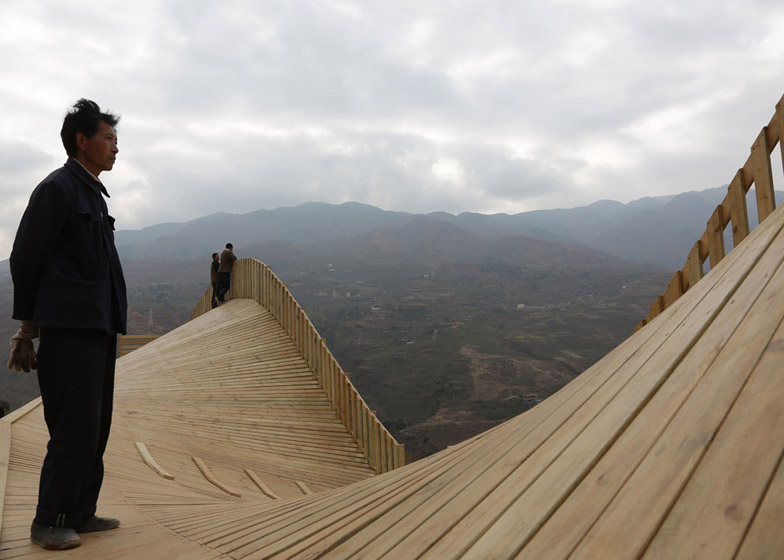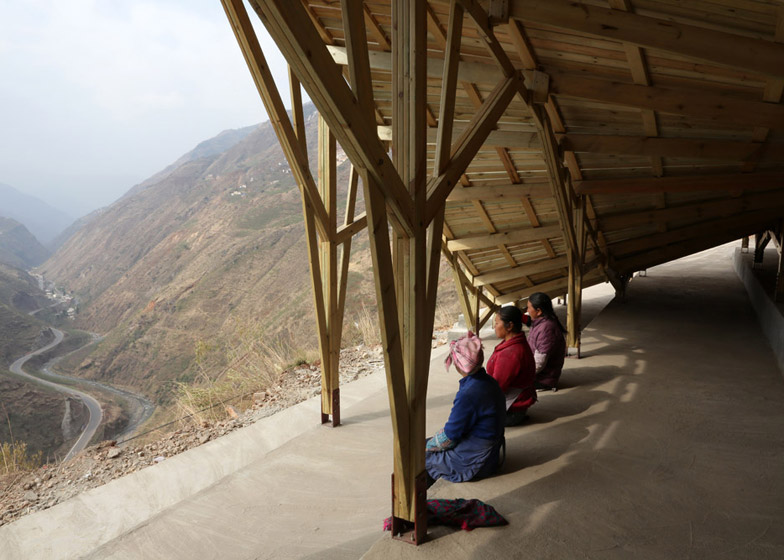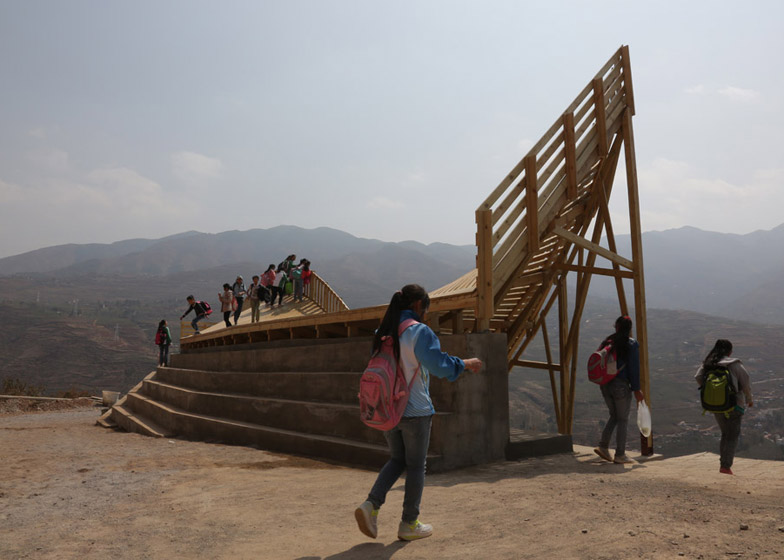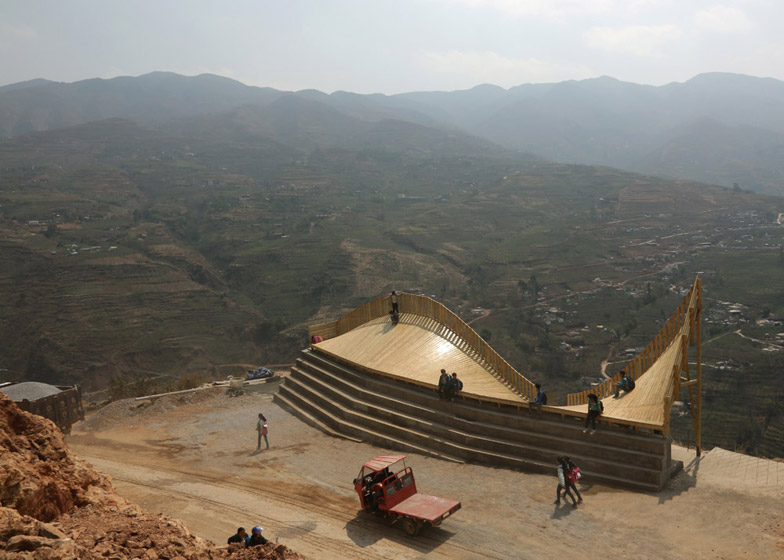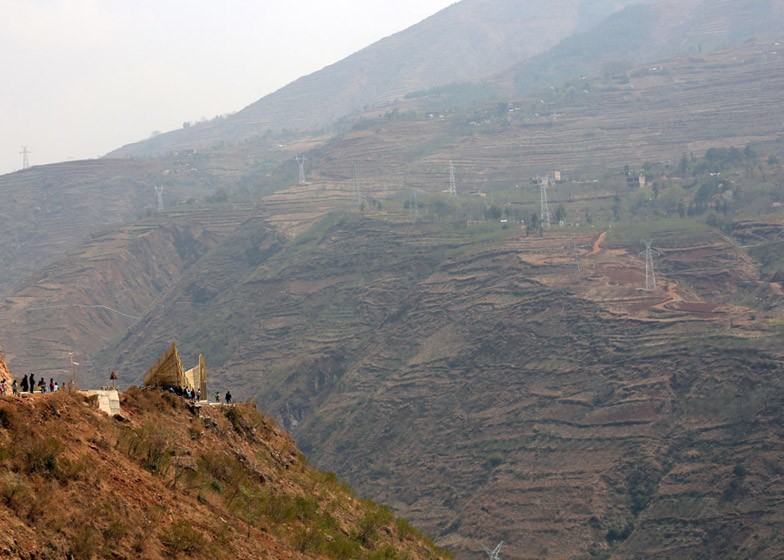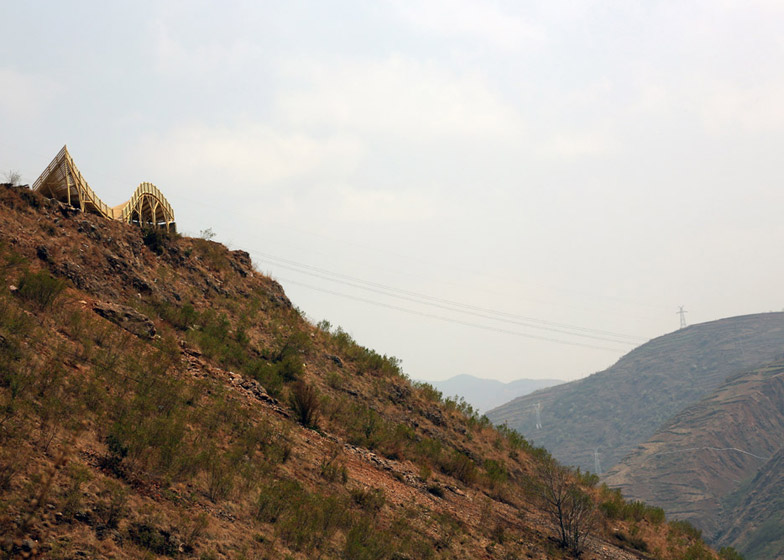This steeply slanted platform by architects John Lin and Olivier Ottervaere forms a roadside market and elevated viewing point for a Chinese town being rebuilt after two earthquakes (+ slideshow).
Lin and Ottevaere, both professors at the University of Hong Kong (HKU), worked with the school's first year architecture students to build the structure in Ludian, a town in China's Yunnan Province that was damaged during earthquakes in 2012 and 2014.
The peaks and troughs of the wooden structure – named The Warp – are designed to emulate the area's rugged landscape, which features a deep valley with terraced rice fields built into walls that stagger down the slope.
A triangular and semi-circular outcrop pitch upwards at each end of the 130-square-metre structure to provide an elevated viewpoint overlooking the landscape below.
The centre of the structure dips down to meet the ground on the edge of the hillside, providing access to a sheltered seating area below.
"The deck extends toward the scenic valley, transforming from a straight line into a sine curve," said Lin and Ottevaere. "Its peaks and valleys mimic the landscape while providing two mirrored spaces, above and below, for viewing and resting."
Long steps run along the base of the structure to form a tiered display area for selling fruit and other local produce, as well as a meeting spot for the town's residents.
"Situated in an ethnically diverse region with a Muslim majority population, the project serves as a meeting point and lookout along the main entry road to this mountain village," explained the architects.
The project is the third in a series of three experimental timber structures erected in Yunnan Province by the architects. The first project, named The Pinch, was a village library with a roof that doubles as a playground, while the second, named The Sweep, was a elevated viewing platform and play area.
"Each project responds directly to its given site, trying to make the best use of a single small structure to provide a maximum of community functions," explained the architects.
Related content: see more viewing platforms
"Collectively the series explores the activities of buying and selling, bridging, resting, viewing, eating, reading and playing."
The Warp was funded through a Knowledge Exchange Grant and the Gallant Ho Experiential Learning Fund from HKU.
Lin has previously completed a number of buildings in rural China, including a courtyard house designed to be self sufficient and a charitable hospital with a walkway ramping up to its roof.
Project credits:
Design: Olivier Ottevaere and John Lin
Project team, HKU Architecture Students: Joyce Ip, Jason Chong, Tod Zhu, Yvonne Xu Meng
Construction: Kunming Dianmuju Shangmao Company
Funding: Gallant Ho Experiential Learning Fund, Knowledge Exchange Grant

